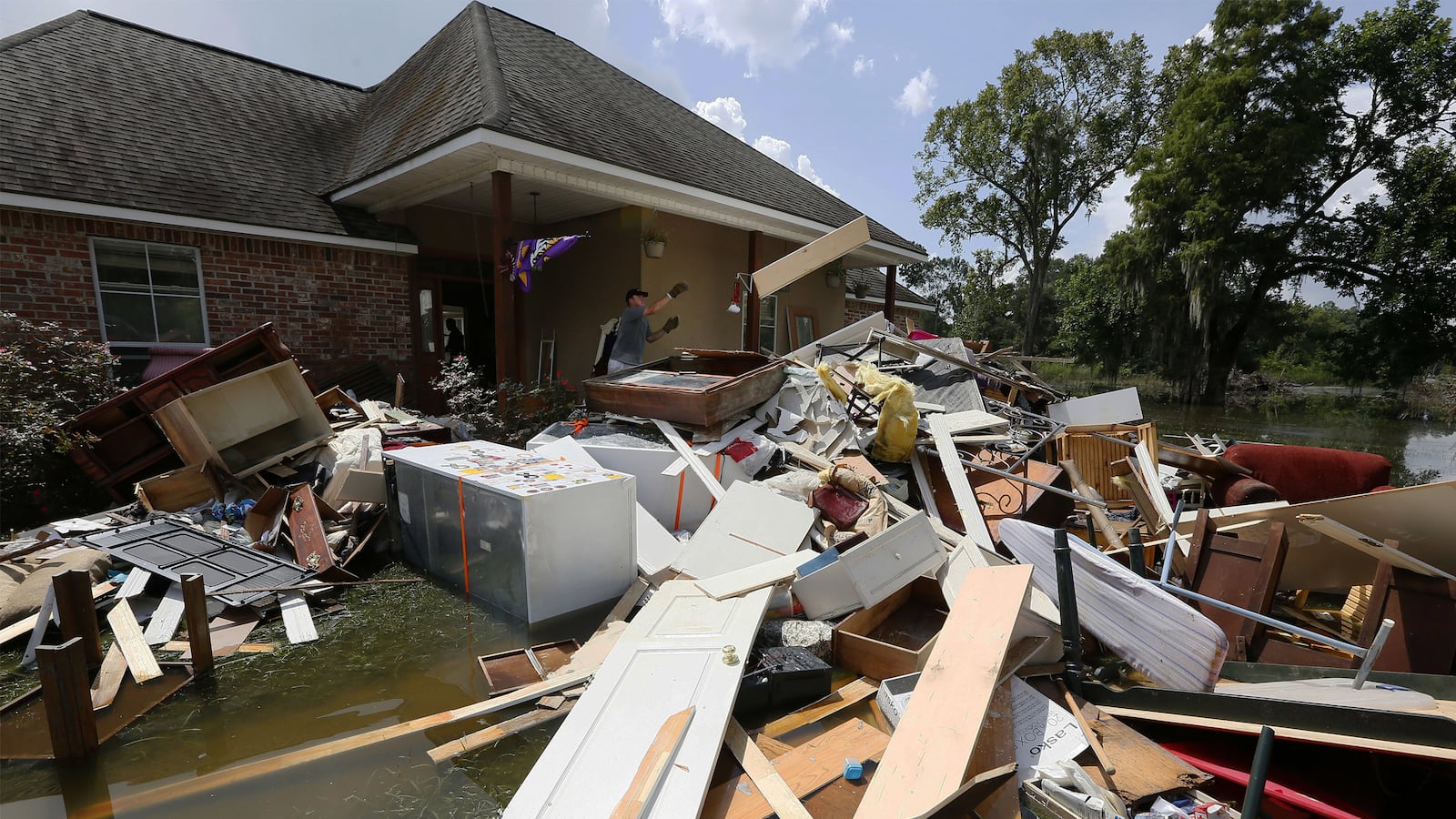This past month, as Americans triumphed in the (sometimes) glistening waters in Rio, other Americans —many thousands of them — once again waded through sludgy, knee-high and deeper inundations to rescue their families, their neighbors, and their cherished belongings. While the country’s attention bobbed between the Olympics and this endless tabloid election, Louisiana families paddled in the darkness – not only was the power out, the media’s bright lights failed to illuminate Louisiana’s struggle and story. The failure to chronicle one of nature’s most powerful acts was pronounced enough that The New York Times’ public editor declared that paper’s coverage “too little, too late.”
Louisiana took on 10.4 million Olympic-size swimming pools worth of water—almost three times the rain that fell during Katrina. Those nearly seven trillion gallons of water were focused in just one-third of the state’s parishes, overrunning small tributaries and causing larger ones to swell into sprawling lakes. An estimated 150,000 Louisianians have filed for relief from FEMA. Nearly 160,000 structures were damaged, including more than 55,000 homes and more than 19,000 businesses. More than 20,000 people were rescued by brave first responders and volunteers, including the “Cajun Navy.” As of this past week, FEMA was still housing more than 1,500 families in shelters.
Beyond the fearsome toll on property, we are most concerned with the impact this disaster will have on the families and children of Louisiana. We know more than 32 schools have been temporarily closed, just as the new academic year was to begin. That means 17,335 children whose lives and communities have been washed out must now contend with a major disruption in their education. Research has long shown that children experience disaster-induced trauma in even more profound and concerning dimensions than adults do.
The short-term post-traumatic stress suffered after disasters like this one might also rouse long-term behavioral health issues in children. Furthermore, access to health and mental health services for children has been impacted by physical damage to health facilities, as well as displacement of families and providers. More than 400 critical in-home nursing visits for at-risk families have been missed, along with dozens of health facilities with flood-impacted staffs and limited operating capability.
These are the heartbreaking realities for the victims and survivors of the Louisiana floods. But the scale of the disaster and the monumental recovery effort that will be required have yet to be acknowledged by an equally profound interest from the media. Unfortunately, the pattern of disaster coverage is all too familiar, often beginning with a deluge only to slow to a drip as the hard work of recovery begins to grind forward.
The coverage of Sandy, the hurricane the media deemed a “superstorm” — that struck the Northeast coast may be an exception to the usual pattern, making it no surprise that Congress appropriated nearly $5 billion in much needed recovery aid for communities affected by it.
Although the Red Cross called the 2016 floods the “biggest disaster” to hit this country since Sandy, the Louisiana catastrophe received barely half as much media coverage. We are concerned that as what attention there has been wanes, so will pressure on Congress to make sure that the state gets the assistance required to help every devastated community get back to a somewhat normal state as rapidly as possible.
A recent analysis of coverage by Columbia University’s National Center for Disaster Preparedness showed a 24-hour spike in news stories about the Louisiana floods when Candidate Donald Trump showed up on August 19 for a photo-op at a relief supply station. Another somewhat more sustained wave of stories accompanied a site visit by President Obama four days later.
Unfortunately, in both cases the news stories – both in print and broadcast —seemed to focus mostly on the political implications of those high-profile appearances, rather than the massive recovery effort that will severely challenge Louisiana’s citizens and its resources.
Recovery will likely be measured in years, not months. While Louisiana’s irrepressibly courageous citizens continue to struggle forward, we are concerned that the media has lost interest just when focus needs to be intensified.
Admittedly, “covering recovery” is not an easy assignment for a journalist. Getting a handle on the scope and complexity of rebuilding communities is not simple by any measure; following the recovery money trail requires determination and dogged persistence.
But the lives and well-being of many people in Louisiana are on the line, and it’s only the media that can make sure that they are not forgotten by a Congress that seems more distracted by presidential politics than recognizing and responding to the urgent needs of citizens in the aftermath of a major disaster.
Rebekah Gee, M.D. is Secretary of the Louisiana Department of Health. Irwin Redlener, MD is president of the Children’s Health Fund and professor at the Mailman School of Public Health and director of the National Center for Disaster Preparedness at Columbia University







